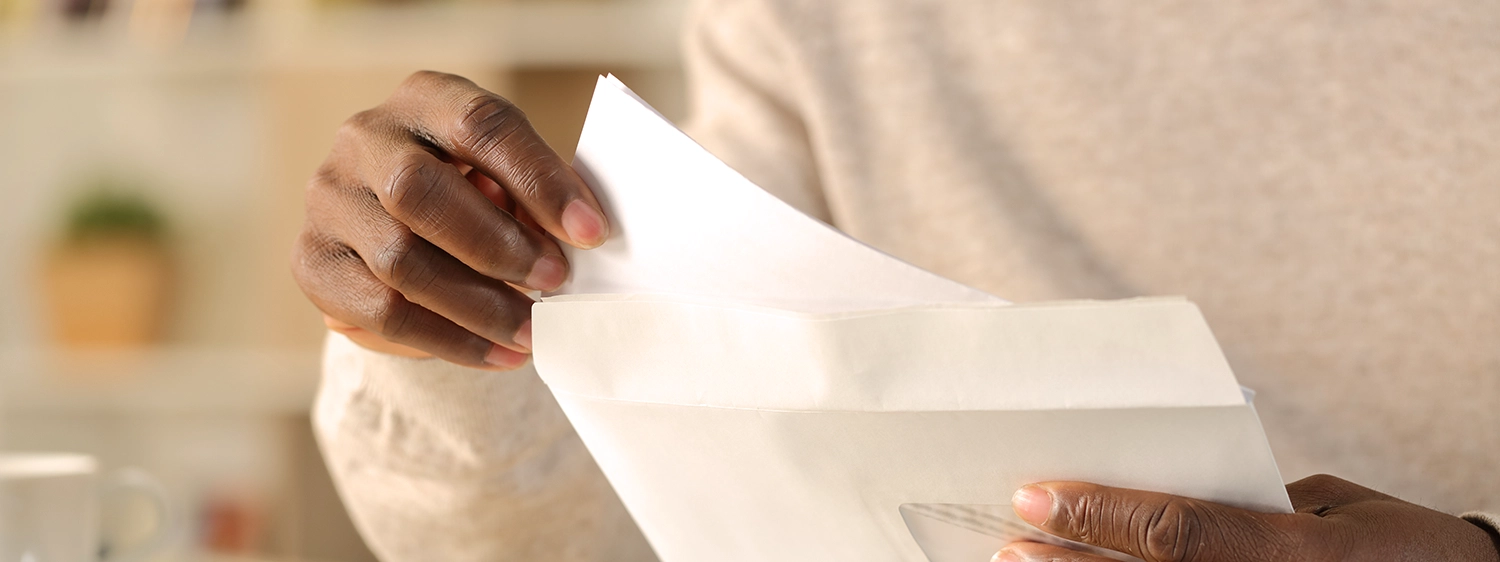Article
7 best practices for handling donor contributions by mail

Receiving a check in the mail from a donor is a cause for celebration—and perhaps a rarity given the prevalence of online giving today.
That said, if your nonprofit receives checks in the mail from donors, it’s important to make sure you have the proper internal controls in place to prevent fraud and ensure each check reaches the bank.
Having these controls is also important for ensuring your organization is providing receipts to donors in a timely manner. Furthermore, new audit standards are requiring auditors to look more closely at controls and processes as part of their audit.
To help your organization make the most of donor contributions by mail, here are seven best practices to consider.
1. Make opening the mail a two-person job.
Internal controls are meant not only to prevent fraud but also to create an environment that limits the temptation to commit a crime.
One way to achieve this environment when handling donor checks is to make opening your organization’s mail a two-person job—i.e., two people must be in the room when the mail is being opened.
If this isn’t feasible, however, consider requiring the person opening the mail to do so in a common area, such as a reception desk or an open office. The bottom line: Be thoughtful about where the mail is opened.
2. Stamp checks “For Deposit Only” as they’re opened.
Once a donor check has been pulled from its envelope, the next step should be to stamp it “For Deposit Only.”
This endorses the check for deposit by the organization, making it much harder to deposit into another account. It’s important to do this even if you’re electronically depositing the checks from your office.
3. Complete a deposit slip and obtain a deposit receipt.
A deposit slip should be filled out and the checks attached to it. How this happens will depend on your organization; typically, all checks go to the accounting department and then an accounting staff member will fill out the deposit slip. Alternatively, the person who opens the mail could complete this step.
It doesn’t really matter who takes the check to the bank. That said, the fewer people who handle checks in your organization, the better. (If something happens, this can make it easier to get to the bottom of it.)
What does matter, however, is that the person who goes to the bank comes back with a receipt from the bank showing the checks were deposited. This should be attached to the deposit slip and sent to your accounting department to be recorded in the general ledger. An accounting staff member should ensure that the receipt from the bank matches the handwritten deposit slip.
4. Input key information into your donor database.
Ideally, you want to get the check to the bank as soon as possible. But you also want to enter key information about the contribution into your donor database. So, you can either copy all of the checks for entry into the donor database (remember to redact any account information from the checks before storing copies of them), or route the checks to the development team to input the information before the checks are taken to the bank.
The donor database should include the following:
- Donor name
- Address
- Contribution amount
- Any restrictions on the contribution
- Was this a response to a fundraising appeal? Event? (If so, make a note of the appeal/event.)
As an important control, the person who opens the mail should NOT be the one who inputs this information into the donor database.
5. Send the donor a thank-you letter and tax deductible receipt.
This important step should happen sooner rather than later. Best practice is to send out a thank-you letter and tax deductible receipt within 48 hours (two business days) of when your organization received the check.
If it takes a month to send a thank-you note to a donor, it can appear as if the organization doesn’t need it or appreciate it. Promptly sending the letter and receipt also helps to make your organization look proficient—like it has reliable processes and systems in place.
6. Reconcile the donor database to the general ledger.
Your organization’s accounting team should reconcile the donor database to the general ledger on a monthly basis. This helps to make sure all of the donor checks that arrived in the mail were recorded as contributions on the general ledger and that each donor received a thank-you letter and receipt.
7. Pay attention to your processes.
Efficiently getting donor checks to the bank and thank-you notes and receipts to donors doesn’t happen without having the right internal controls and processes in place. This can be a challenge if your staff is overwhelmed or if hurdles are in the way.
If your nonprofit is having a hard time managing the checks it receives in the mail, Abdo can help. We can guide you in reviewing and improving your processes, so this aspect of your organization runs smoothly.
Taking time to implement best practices for receiving donor checks in the mail can help to protect your organization’s resources and strengthen donor relationships. In other words, it’s well worth it.
To learn more about how we can partner with you to improve your nonprofit’s internal controls and processes, contact us today.
January 15, 2025
Meet the Expert
Reach out to our team
Let's discuss
Interested in discussing this topic further? Fill out this form to get in touch with our advisors and get the conversation started. Together, we can help light the path forward to a brighter future.
"*" indicates required fields
